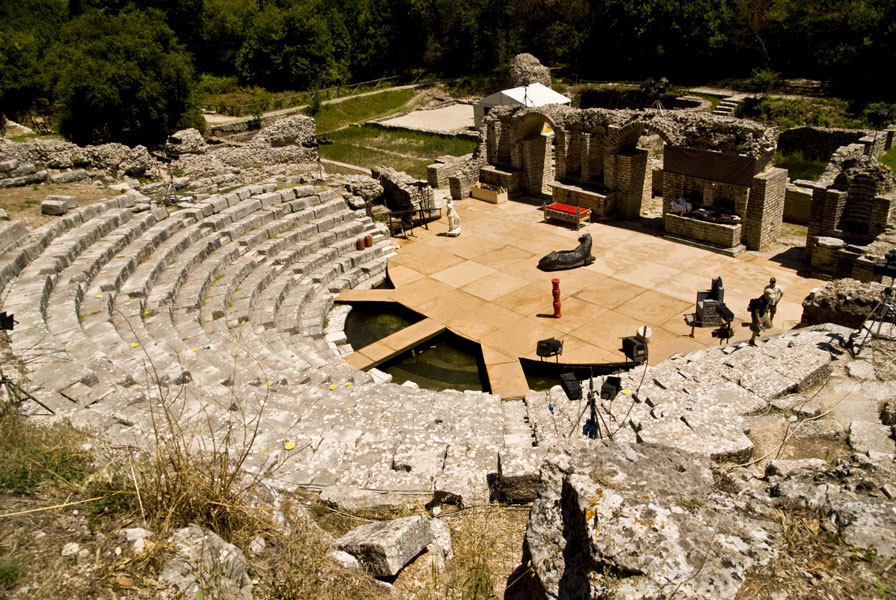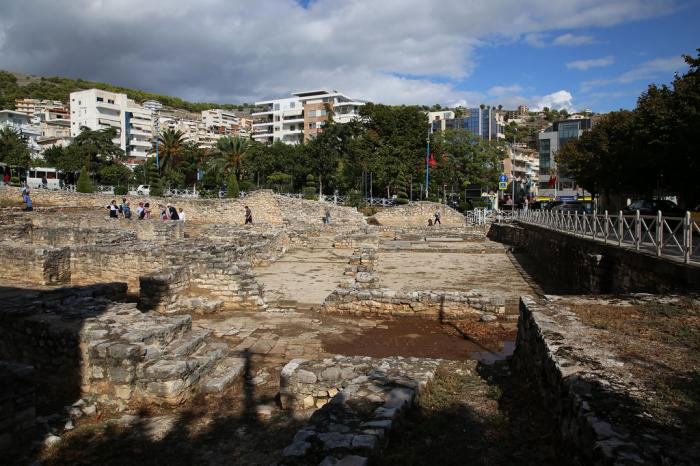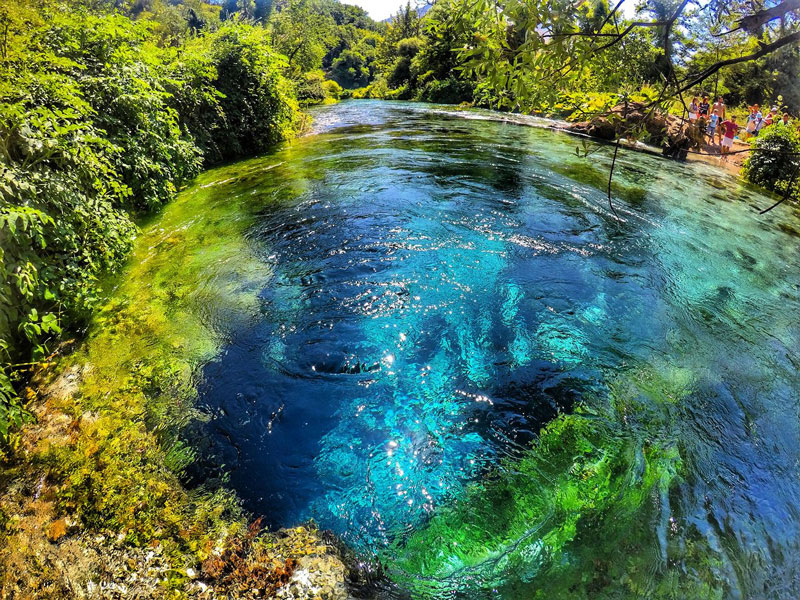Butrint was an ancient Greek and later Roman city and bishopric in Epirus. Perhaps inhabited since prehistoric times, Buthrotum was a city of the Epirote tribe of the Chaonians, later a Roman colony and a bishopric. It entered into decline in Late Antiquity, before being abandoned during the Middle Ages after a major earthquake flooded most of the city. In modern times it is an archeological site in Vlorë County, Albania, some 14 kilometres south of Sarandë and close to the Greek border.
Butrinti


Sinagoga
Synagogue (/ˈsɪnəɡɒɡ/; from Ancient Greek συναγωγή, synagogē, ‘assembly’; Hebrew: בית כנסת bet knesset, ‘house of assembly’, or בית תפילה bet tefila, “house of prayer”; Yiddish: שול shul, Ladino: אשנוגה esnoga, ‘bright as fire’; or קהל kahal) is a Jewish or Samaritan house of worship. Synagogues have a large place for prayer (the main sanctuary) and may also have smaller rooms for study and sometimes a social hall and offices. Some have a separate room for Torah study, called the בית מדרש beth midrash, lit. “house of study”.
Kalaja e Lekursit
Lëkurësi Castle is a ruined castle in Lëkurës, southern Albania. The castle is on a strategic hill point overlooking the town of Saranda, southeast of the town centre. From here one can control the whole town as well as the islands of Ksamil.
The castle of Lëkurës was built in 1537 by Sultan Suleiman the Magnificent who had attacked Corfu and needed to control the harbor of Saranda and the road that connected it with Butrint.


Syri I Kalter
The “Blue Eye” is a water spring and natural phenomenon occurring near the village of Muzinë in Finiq municipality, southern Albania. A popular tourist attraction, the clear blue water of the river bubbles forth from a depth of more than fifty metres. Divers have descended to fifty metres, but it is still unclear what the actual depth of the karst hole is.
This phenomenon is also known as ‘springs of Bistricë’ as it is the initial water source of Bistricë river, 25 km long, which ends in the Ionian Sea south of Sarandë. The source stands at an altitude of 152 m and has a discharge rate of 18400 l/s.
The immediate area 1.8 km2 (0.69 sq mi) is a Nature Monument and is characterized by oak and sycamore trees. In summer 2004, the source was temporarily dried up.



